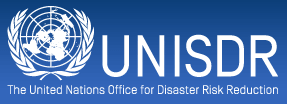The ‘2015 Pacific Regional Disaster Resilience Meeting,' which convened amid growing concerns that irregular climatic activities of El Niño are leading to severe weather events across the Pacific, recommended developing national and regional targets and indicators in order to successfully implement the Sendai Framework for Disaster Risk Reduction (DRR).
 28 October 2015: The ‘2015 Pacific Regional Disaster Resilience Meeting,’ which convened amid growing concerns that irregular climatic activities of El Niño are leading to severe weather events across the Pacific, recommended developing national and regional targets and indicators in order to successfully implement the Sendai Framework for Disaster Risk Reduction (DRR). The meeting, held in Suva, Fiji, from 26-27 October 2015, provided a platform to discuss the measures needed to ensure that people are risk-informed and have access to early warnings and cyclone shelters, how to strengthen risk governance and invest in disaster resilient infrastructure, and plans to build back better after disasters.
28 October 2015: The ‘2015 Pacific Regional Disaster Resilience Meeting,’ which convened amid growing concerns that irregular climatic activities of El Niño are leading to severe weather events across the Pacific, recommended developing national and regional targets and indicators in order to successfully implement the Sendai Framework for Disaster Risk Reduction (DRR). The meeting, held in Suva, Fiji, from 26-27 October 2015, provided a platform to discuss the measures needed to ensure that people are risk-informed and have access to early warnings and cyclone shelters, how to strengthen risk governance and invest in disaster resilient infrastructure, and plans to build back better after disasters.
Timothy Wilcox, Pacific Office for the UN Office for Disaster Risk Reduction (UNISDR), noted that while some parts of the region are dealing with drought and water shortages due to El Niño, others are preparing for high winds, storm surges and heavy rainfall. A Pacific Disaster Center report stated that El Niño’s strength will be highest towards the end of 2015, but will continue into the first half of 2016.
The meeting resulted in a statement reinforcing and supporting global targets and indicators that are compatible with implementation of the Sendai Framework, the Sustainable Development Goals (SDGs) and a new climate change agreement. The statement also requests UNISDR to coordinate a plan with timelines and resource requirements for implementing the Framework to best support Pacific countries. It advocates for increased regional collaboration to: enhance the DRR monitoring and review mechanism; and explore “effective modalities” for regional cooperation and coordination with development partners to implement the Sendai Framework.
The statement recognizes: that preventing and reducing risks requires engaging all stakeholders, including the most vulnerable, and incorporating them into disaster risk management and climate change adaptation planning; and that traditional knowledge complements scientific knowledge with regard to increased community preparedness and resilience. The statement also acknowledges the utility of monitoring and reporting within the Sendai Framework to planning at all levels; acknowledges the need for a common database to collect baseline, disaggregated data (by age and gender); recommends strengthening and reinforcing collaborations and partnerships to improve disaster risk governance; and encourages synergies between the public and private sectors to promote risk-sensitive investment.
In parallel to the meeting, the UN Office for the Coordination of Humanitarian Affairs (OCHA) convened the ‘Pacific Humanitarian Partnership Meeting,’ also in Suva, Fiji, in order to strengthen relationships between actors working on disaster response, resilience, recovery and preparedness. The International Federation of Red Cross and Red Crescent Societies also held a two-day training on disaster law to strengthen legal preparedness for dealing with disasters in Pacific countries.
The disaster resilience meeting, which was organized by UNISDR, was the first in the region since the adoption of the Sendai Framework in March 2015. [UNISDR Press Release, 23 October] [UNISDR Press Release on Complacency, 26 October] [UN Press Release] [UNISDR Press Release on El Niño, 26 October] [UNISDR Press Release, 27 October] [Meeting Statement]